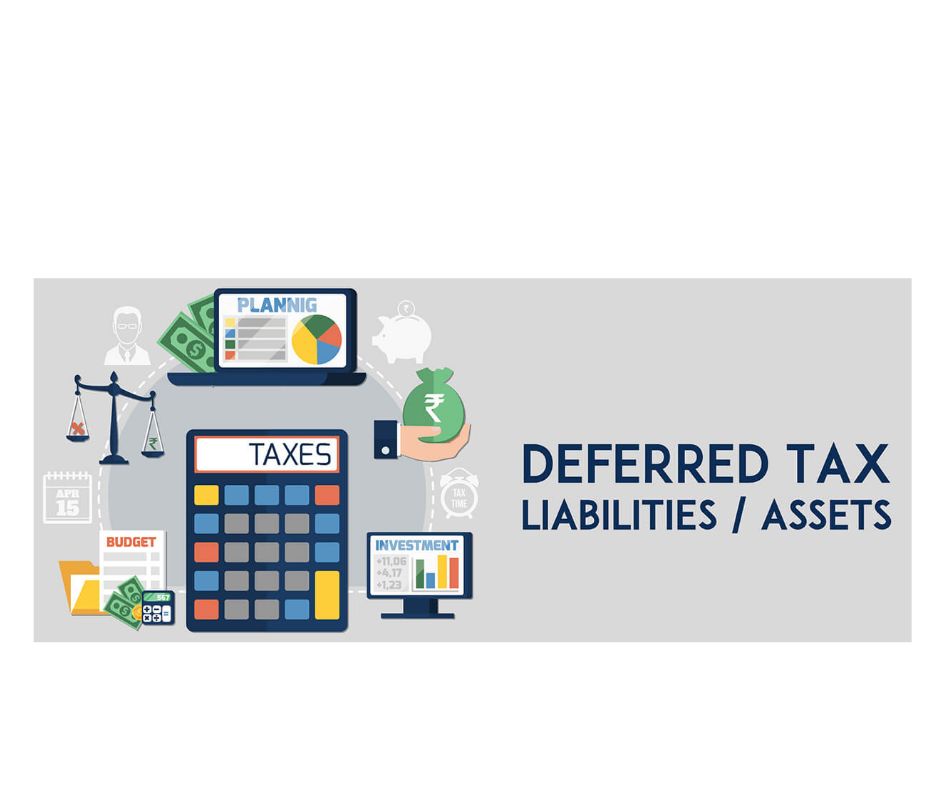

User Intent
Users searching for this topic are looking to understand whether it is compulsory to recognize a Deferred Tax Asset (DTA) or Deferred Tax Liability (DTL) in financial statements. They may be accountants, finance professionals, business owners, or students who want to grasp the application, benefits, and limitations of deferred tax accounting.
Introduction
Deferred tax plays a crucial role in financial accounting. It arises due to temporary differences between the tax base of assets or liabilities and their carrying amount in financial statements. While accounting standards provide guidelines for recognizing DTA and DTL, businesses often question whether it is mandatory to create them.
This article explores the necessity of Deferred Tax Assets and Liabilities, their application, benefits, limitations, and whether companies are required to record them in their books.
Definition
A Deferred Tax Asset (DTA) is recognized when a company pays taxes in advance or incurs losses that can be offset against future taxable income. It represents a potential tax benefit.
On the other hand, a Deferred Tax Liability (DTL) arises when a company pays less tax in the present but is expected to pay more in the future due to accounting adjustments.
Both DTA and DTL stem from temporary differences between the book value and the tax base of assets and liabilities.
Application in Detail
When is DTA Created?
A company creates Deferred Tax Assets in scenarios like:
- Carrying forward losses: If a business has net operating losses (NOLs), it can use them to offset future taxable income, leading to a DTA.
- Provision for doubtful debts: If a company records a provision for bad debts in financial books but tax laws do not allow immediate deductions, a temporary difference arises, leading to DTA.
- Employee benefits: Expenses like gratuity and leave encashment, when recognized in books but deducted for tax purposes later, result in DTA.
When is DTL Created?
A company records Deferred Tax Liabilities when:
- Accelerated depreciation: If tax laws allow a higher depreciation rate than the books, it reduces taxable income now, but higher tax will be payable later.
- Revenue recognition differences: If a company recognizes revenue in books earlier than in tax computations, it results in a DTL.
- Expenses deducted later for tax purposes: Certain expenses, like warranties, may be accounted for in books immediately but allowed as deductions later in tax laws.
Accounting Standards and Regulatory Compliance
- IFRS (IAS 12) and US GAAP (ASC 740) mandate deferred tax accounting.
- Indian Accounting Standards (Ind AS 12) also require recognition of DTA and DTL if future tax benefits are probable.
- Tax laws of different countries may influence how and when deferred tax is recognized.
Benefits of Creating Deferred Tax Asset and Liability
1. Accurate Financial Reporting
Recognizing DTA and DTL ensures that financial statements accurately reflect tax obligations, giving a true picture of financial health.
2. Smoother Cash Flow Management
Deferred tax helps businesses prepare for future tax obligations, preventing unexpected financial stress.
3. Tax Planning and Optimization
Companies can leverage DTAs to reduce tax burdens in profitable years, optimizing tax expenses efficiently.
4. Better Investor Confidence
A well-maintained deferred tax record builds trust among investors, showing prudent financial management.
5. Compliance with Accounting Standards
For public companies, deferred tax accounting is often mandatory to comply with IFRS, US GAAP, or local accounting standards.
Limitations of Deferred Tax Asset and Liability
1. Dependency on Future Profits
DTA is only useful if the company expects future taxable profits. Otherwise, it remains unutilized.
2. Complex Calculations
The estimation of DTA and DTL involves detailed analysis and frequent adjustments based on tax laws.
3. Regulatory Changes
Government tax policies change over time, impacting DTA and DTL calculations and making them uncertain.
4. Temporary Nature
Since DTAs and DTLs arise due to temporary differences, they eventually reverse, making them a short-term financial adjustment rather than a long-term benefit.
Comparative Table: DTA vs. DTL
| Feature | Deferred Tax Asset (DTA) | Deferred Tax Liability (DTL) |
|---|---|---|
| Nature | Future tax benefit | Future tax obligation |
| Created When | Overpaid tax or deductible expenses exceed taxable income | Underpaid tax due to deferred expenses/revenue |
| Examples | Loss carryforward, bad debt provisions, employee benefits | Accelerated depreciation, early revenue recognition |
| Impact on Future Taxes | Reduces future tax liability | Increases future tax liability |
| Accounting Standard Compliance | Required under IFRS, US GAAP, Ind AS | Required under IFRS, US GAAP, Ind AS |
Conclusion
The recognition of Deferred Tax Assets and Liabilities is generally mandatory under IFRS, US GAAP, and other accounting standards. However, its necessity depends on whether the company follows accrual-based accounting and the probability of utilizing DTA in the future. While DTA can help reduce tax burdens, DTL ensures that tax obligations are recorded transparently.
Companies must carefully assess their financial and tax position before recognizing deferred tax items in their books. Proper tax planning, accurate estimations, and compliance with standards ensure that deferred tax benefits the business without causing financial misstatements.
FAQs
1. Is it compulsory to recognize deferred tax assets and liabilities?
Yes, under IFRS and US GAAP, companies are required to recognize deferred tax assets and liabilities if the probability of their realization is high.
2. Can deferred tax assets be reversed?
Yes, DTAs reverse when tax deductions are applied in future periods, reducing taxable income.
3. What happens if a company does not create a deferred tax asset?
If a company fails to recognize a DTA, it may understate future financial benefits and overstate tax liabilities.
4. How does deferred tax affect cash flow?
While deferred tax does not impact immediate cash flow, it helps businesses plan for future tax payments or savings.
5. Do small businesses need to record deferred tax?
Not always. Small businesses following cash accounting methods may not need deferred tax accounting unless required by local laws.

For more information to visit:https://www.incometax.gov.in